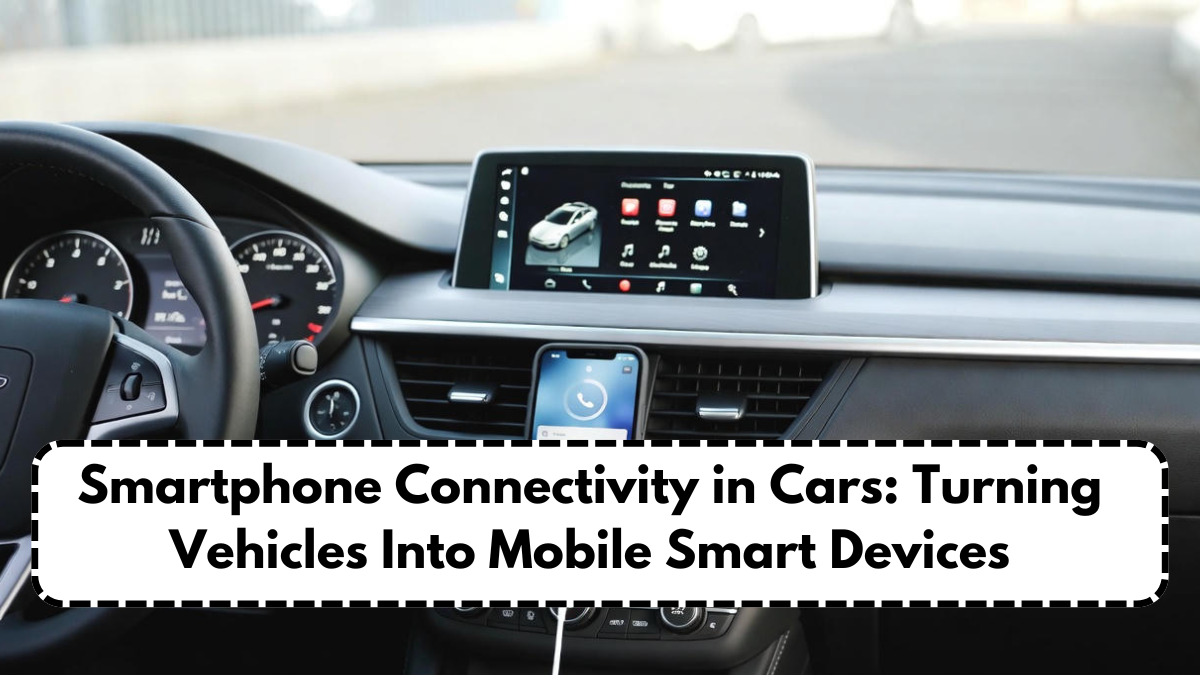In the age of digital transformation, cars are no longer isolated machines made solely for transportation. The growing trend of smartphone connectivity cars is revolutionizing the driving experience, turning vehicles into dynamic, connected cars that interact seamlessly with our digital lives. With the ability to sync smartphones, control systems remotely, and access cloud-based services, cars are evolving into intelligent mobility hubs on wheels.
As drivers demand more convenience and customization, automakers are integrating technologies that bridge smartphones and vehicle ecosystems. The concept of connected cars is redefining communication, entertainment, and safety — all through real-time connectivity powered by advanced mobile integration. The fusion of smartphones and vehicles is not just about convenience; it’s the foundation of a smarter, more personalized driving future.

The Evolution of Smartphone Connectivity in Cars
The journey of smartphone connectivity cars began with simple Bluetooth pairings that allowed hands-free calling and basic audio streaming. However, modern systems go far beyond that. Today, vehicles are equipped with advanced infotainment platforms like Android Auto, Apple CarPlay, and proprietary manufacturer systems that enable seamless interaction between mobile devices and car dashboards.
Drivers can now mirror smartphone apps directly on the vehicle’s display, use voice assistants for navigation, and even control climate settings through mobile apps. This level of integration blurs the line between phone and car, creating a unified smart ecosystem.
Key features of smartphone connectivity cars include:
- Real-time navigation updates and voice-controlled directions
- Access to apps like Spotify, WhatsApp, and Google Maps directly from the car display
- Remote control for locking, pre-cooling, or checking vehicle status
- Integration with connected cars data systems for predictive maintenance and safety alerts
These innovations showcase how digital convenience is reshaping the relationship between driver and vehicle.
How Connected Cars Are Revolutionizing Driving
Connected cars take smartphone integration a step further by embedding Internet of Things (IoT) capabilities into the vehicle itself. This means cars can communicate not only with smartphones but also with infrastructure, other vehicles, and cloud servers.
Through smartphone connectivity cars, drivers can access real-time traffic information, monitor performance analytics, and receive software updates remotely. The car becomes a mobile data center — intelligent, responsive, and connected to everything around it.
Core benefits of connected cars include:
- Enhanced safety through real-time alerts and adaptive systems
- Vehicle-to-vehicle (V2V) and vehicle-to-infrastructure (V2I) communication
- Predictive maintenance and diagnostics powered by data from smartphone connectivity cars
- Personalized driving experiences with AI and user data integration
Together, smartphone connectivity cars and connected cars represent a shift toward smarter, data-driven transportation systems.
Comparison Between Traditional Cars and Connected Cars
| Feature | Traditional Cars | Smartphone Connectivity Cars / Connected Cars |
|---|---|---|
| Connectivity | Limited Bluetooth or USB | Seamless cloud and IoT integration |
| Navigation | Manual GPS or paper maps | Real-time mobile-based navigation |
| Safety Alerts | Basic warning systems | Smart sensors and AI-based alerts |
| Software Updates | Manual service-based | Over-the-air automatic updates |
| User Experience | Static interface | Personalized, app-integrated interface |
This comparison highlights how connected cars powered by smartphone connectivity cars transform driving into a tech-enhanced experience. Drivers can now stay informed, entertained, and secure — all while keeping their hands on the wheel and eyes on the road.
The Future of Smartphone Connectivity Cars
As technology progresses, the concept of smartphone connectivity cars will continue to evolve. With the integration of 5G and artificial intelligence, future connected cars will deliver faster communication speeds and predictive intelligence. Cars will soon be able to anticipate user needs, from adjusting settings based on mood to suggesting destinations using real-time traffic insights.
Upcoming innovations in connected cars include:
- Biometric authentication via smartphones for personalized access
- Unified dashboards connecting multiple devices simultaneously
- AI-driven driving companions that learn user behavior
- Full synchronization between home, smartphone, and vehicle systems
In essence, smartphone connectivity cars are shaping a world where your vehicle becomes an intelligent extension of your digital lifestyle.
Conclusion
The convergence of smartphone connectivity cars and connected cars marks a new chapter in automotive innovation. This digital fusion empowers vehicles with intelligence, allowing drivers to experience convenience, safety, and entertainment like never before.
As automakers embrace software-defined systems and 5G networks, cars will continue to evolve into fully integrated smart devices. The future of mobility is not just about driving — it’s about staying connected, wherever the journey leads.
FAQs
What are smartphone connectivity cars?
Smartphone connectivity cars are vehicles that integrate smartphones for real-time navigation, app control, and communication directly through the car’s system.
How do connected cars work?
Connected cars use internet and IoT technology to communicate with smartphones, infrastructure, and cloud servers for enhanced safety and convenience.
What are the benefits of smartphone connectivity cars?
Smartphone connectivity cars provide hands-free control, real-time navigation, entertainment access, and vehicle monitoring through smartphone apps.
Are connected cars secure?
Modern connected cars employ strong encryption, authentication systems, and secure OTA updates to protect data and prevent unauthorized access.
What is the future of smartphone connectivity in vehicles?
The future of smartphone connectivity cars includes deeper AI integration, 5G-based real-time updates, and seamless connection between mobile devices and vehicles.
Click here to learn more